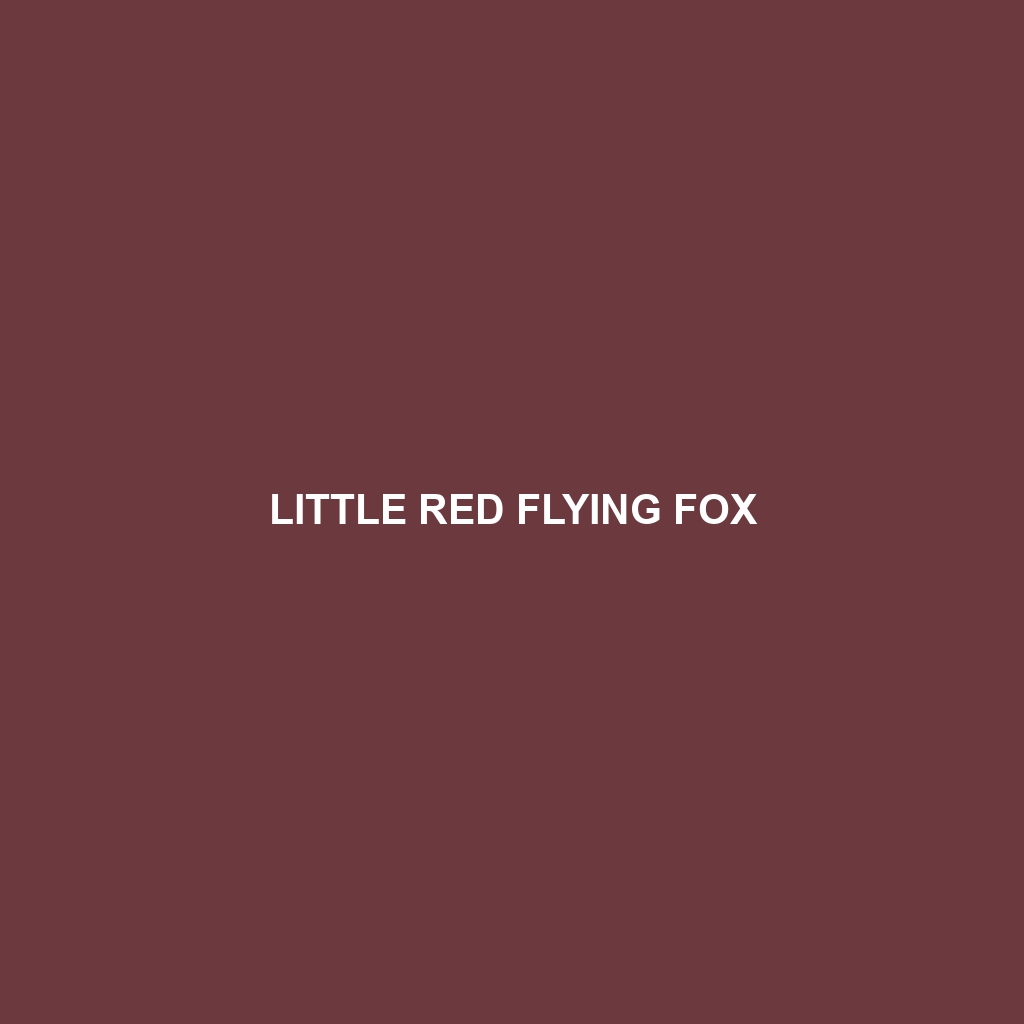Little Red Flying Fox
Common Name: Little Red Flying Fox
Scientific Name: Petaurus scapulatus
Habitat
The Little Red Flying Fox primarily inhabits subtropical and tropical regions, predominantly found in areas across Australia, including Queensland, New South Wales, and parts of Western Australia. They thrive in lush forest environments, rainforest edges, and fruiting trees, often roosting in large colonies close to fruit sources.
Physical Characteristics
The Little Red Flying Fox is a medium-sized bat with a wingspan that can reach up to 1.2 meters (4 feet). Adults typically weigh between 400 to 700 grams (0.88 to 1.54 lbs). Their fur is unique, exhibiting a reddish-brown to orange coloration on their backs, while their bellies are a lighter shade. Distinctively, they possess long, pointed ears and a small yet striking face, which makes them both recognizable and endearing.
Behavior
These bats are mostly nocturnal, engaging in foraging activities during the night. They are known for their strong social bonds, often seen roosting in large groups, which aids in protecting against predators. Little Red Flying Foxes are also agile in flight, capable of gliding effortlessly from tree to tree, which makes them efficient foragers.
Diet
The diet of the Little Red Flying Fox predominantly consists of ripe fruits, nectar, and flowers. They are particularly fond of figs and eucalyptus flowers. Their feeding habits make them vital pollinators and seed dispersers, contributing significantly to the regeneration of their habitats.
Reproduction
Breeding for the Little Red Flying Fox typically occurs between September and December, with females giving birth to a single pup after a gestation period of around 4 months. Newborns are cared for by their mothers, often clinging to their fur for warmth and protection during the first few weeks of life, and are weaned by around 4 months old.
Conservation Status
The Little Red Flying Fox is currently listed as “Vulnerable” on the IUCN Red List due to habitat loss, climate change, and hunting pressures. Their populations are declining, making conservation efforts crucial for maintaining healthy populations of this species.
Interesting Facts
1. Little Red Flying Foxes can consume up to half of their body weight in fruit each night, showcasing their significant role in local ecosystems.
2. They have a unique echolocation ability, allowing them to navigate through dense forest during their nightly flight.
Role in Ecosystem
As important pollinators and seed dispersers, Little Red Flying Foxes play a crucial role in maintaining healthy ecosystems. Their feeding habits support the growth of various plant species, which in turn provides habitat and food for other wildlife. Their presence in the environment is essential for biodiversity and the overall balance of their habitats.
